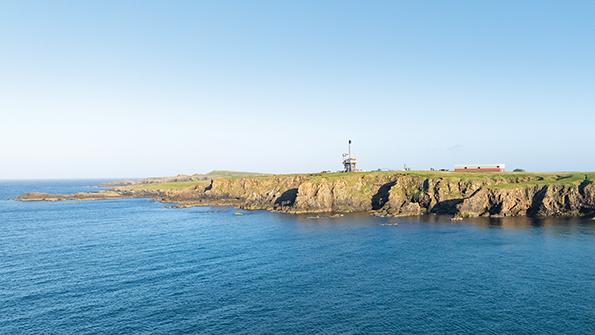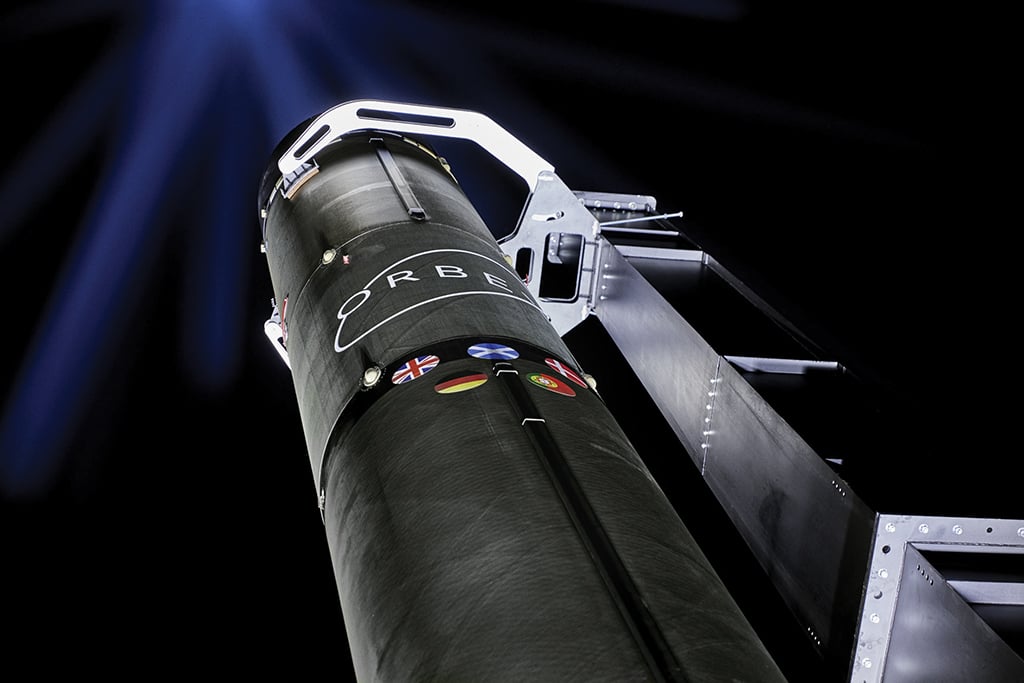This article is published in Aviation Week & Space Technology and is free to read until Aug 14, 2024. If you want to read more articles from this publication, please click the link to subscribe.

The SaxaVord Spaceport in Scotland’s Shetland Islands expects to host RFA One’s inaugural launch later this year.
This year, a vertical launch takeoff may occur from the UK for the first time in five decades.
Two new spaceports in northern Scotland have been racing to be crowned the UK’s first vertical orbital launch site, not to mention the first to showcase a sovereign space capability in the country since the 1971 swan-song launch of the Black Arrow orbital rocket. After years of planning, the SaxaVord Spaceport in northern Scotland is positioned to launch its debut mission by September, with the neighboring Sutherland Spaceport aiming to complete its own debut mission by next year.
- SaxaVord is the only fully licensed launchport in UK to date
- Sweden and Norway also seek to host launches to LEO and polar orbits
SaxaVord has secured the licenses necessary to host its inaugural launch by year-end, and the site will support small-satellite launchers heading to multiple orbital trajectories, including both polar and sun-synchronous orbits (SSO), Scott Hammond, the company’s deputy CEO, tells Aviation Week. The site was granted a UK spaceport license at the end of 2023 for up to 30 launches a year, and in April it received the range license necessary to control the area’s sea and airspace during launch.
The port is planned to feature three launchpads eventually and to be the exclusive site for German launch provider Rocket Factory Augsburg (RFA). For now, one launchpad—dubbed “Fredo”—and launch stool have been completed and are ready to host the RFA ONE rocket, a three-stage launch vehicle capable of deploying up to 1,300 kg (2,870 lb.) to a 500-km (310-mi.) polar orbit.
The company said it successfully hot-fired the RFA ONE’s first stage with four Helix engines in May. Next, RFA plans to hot-fire the first stage again with all nine Helix engines for flight qualification, while also testing the second and third stages, and then ship all the stages to Scotland, ahead of assembling the full RFA ONE stack at SaxaVord in August and launching in September.
Other SaxaVord customers include Skyrora, an Edinburgh, Scotland-based launch company building its XL three-stage light class vehicle, and HyImpulse from Germany, which successfully launched its SR75 rocket for the first time from Australia in May. Both companies plan to launch from SaxaVord within the next year.
SaxaVord will also support the UK Pathfinder effort, a government-sponsored mission led by Lockheed Martin and anticipated to launch in 2025. The company is working with Moog to develop an Orbital Maneuvering Vehicle (OMV) to carry up to six 6U cubesats to low Earth orbit (LEO), using ABL Space Systems’ RS-1 microlauncher. The UK government has invested $28 million in the Pathfinder mission.
A Lockheed spokesperson said the OMV and cubesat development is ongoing as ABL continues to prepare for RS-1’s inaugural flight, expected to take place this year. Dubbed “Flight 2,” RS-1 will be a production variant of the rocket that initially flew in January 2023 and failed shortly after liftoff. ABL Space Systems declined to comment.
Meanwhile, UK launch provider Orbex is moving ahead with the construction of the Sutherland Spaceport in northern Scotland. The company broke ground on the spaceport in May 2023 and is close to finishing the road leading up to its launchpad, Orbex CEO Phillip Chambers tells Aviation Week. The road proved to be a challenging feat, as it sits on top of a peat bog, he adds. The launchpad, integration facility and antenna park have yet to be built.
The company expects to launch its Prime rocket—a dual-stage microlauncher capable of carrying 397 lb. to LEO—by 2025, Chambers says. The company is licensed for 12 launches per year but has ambitions to increase the cadence by eventually building a second launchpad.
Both the SaxaVord and Sutherland spaceports are supported by a mix of public and private funding initiatives. Hammond says SaxaVord has received about £48 million ($61 million) in funding. The former Tory UK government pledged in March to invest $12.7 million into the spaceport.

Orbex has received about $135 million to support both Orbex Prime’s development and construction of the spaceport, more than $94 million of it from private equity and about $41 million from government partners.
Both companies say there is a business case for each site to support the vast numbers of small launchers entering the European market.
SaxaVord is the sole fully licensed launch site in the UK, and it stands out for its focus on cost-effective launch services, Hammond says. While the site’s focus will be on commercial LEO missions, national security launches and government launches would also eventually be in the mix. SaxaVord is ensuring it has the proper security arrangements in place to accommodate launches for the U.S. Space Force, NATO or European militaries.
For Orbex, the draw will be its focus on developing an environmentally friendly rocket that uses biopropane to get “as close to carbon-neutral as possible,” Chambers says.
The two new Scottish sites have to compete not only with each other for smallsat missions but also with spaceports coming online in Norway and Sweden.
In late June, the Swedish Space Corp. and Firefly Aerospace signed a contract to launch satellites into LEO from the Esrange Space Center in Sweden. Beginning in 2026, Firefly’s orbital Alpha Rocket will be tasked with carrying payloads to orbit. While Esrange has been operational since 1966, it has largely supported sounding rocket launches for microgravity and atmospheric research.
Meanwhile, Norway’s Andoya Spaceport was declared open for business in late 2023. It will be the home base for German launch company Isar Aerospace, which plans to launch its Spectrum rocket by year-end.





